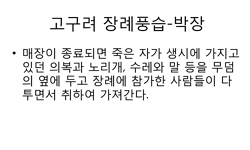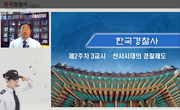본 논문은 문화상품의 소재가 되는 책가도의 전통적인 요소를 발굴하여 재조명하는 연구의 관점에서 조선 후기 책가도에 나타난 책갑 문양을 기반으로 문화상품에서의 활용 방향을 모색하...
http://chineseinput.net/에서 pinyin(병음)방식으로 중국어를 변환할 수 있습니다.
변환된 중국어를 복사하여 사용하시면 됩니다.
- 中文 을 입력하시려면 zhongwen을 입력하시고 space를누르시면됩니다.
- 北京 을 입력하시려면 beijing을 입력하시고 space를 누르시면 됩니다.
조선 후기 책가도의 책갑 문양을 활용한 문화상품 연구 = A Study on the Cultural Products Using the Bookcase Pattern of Chaekgado in the Late Joseon Dynasty
한글로보기https://www.riss.kr/link?id=T16397699
- 저자
-
발행사항
서울 : 성신여자대학교 문화산업예술대학원, 2022
-
학위논문사항
학위논문(석사) -- 성신여자대학교 문화산업예술대학원 , 문화산업예술학과 , 2022. 8
-
발행연도
2022
-
작성언어
한국어
- 주제어
-
발행국(도시)
서울
-
형태사항
viii,111 ; 26 cm
-
일반주기명
지도교수: 최배영
-
UCI식별코드
I804:11041-000000014506
- 소장기관
-
0
상세조회 -
0
다운로드
부가정보
국문 초록 (Abstract)
본 논문은 문화상품의 소재가 되는 책가도의 전통적인 요소를 발굴하여 재조명하는 연구의 관점에서 조선 후기 책가도에 나타난 책갑 문양을 기반으로 문화상품에서의 활용 방향을 모색하는 데 목적을 두었다. 이러한 연구의 목적하에 2021년 9월 1일부터 12월 31일까지 국립고궁박물관, 국립중앙박물관, 경기도박물관, 서울공예박물관, 서울역사박물관, 여주박물관, 국립전주박물관, 미국 샌프란시스코 아시아미술관을 비롯해 개인 소장의 책가도가 이미지로 탑재되어 있는 웹사이트와 도록에 대한 사례조사를 시행하였다.
이 중에서 연구대상의 첫 번째 선정기준은 선행연구들에서 조선 후기 궁중 화원의 책가도로 밝혀진 것 그리고 책가도의 구성 및 기물의 종류, 서양 화법의 적용 등에서 화격이 높은 궁중 화원 급의 작품으로 추정되거나 궁중 책가도를 모사한 것으로 한정하였다. 두 번째 선정기준은 조선 후기 책가도 가운데 비교적 보존상태가 양호하여 책갑의 문양이 명확하게 확인 가능한 것으로 하였다. 이러한 기준을 토대로 18C 말부터 19C 후반 사이에 제작된 장한종 필 책가도(경기도박물관), 팔각 책가도(개인 소장), 이형록 필 책가도(개인 소장), 이응록 필 책가도(국립중앙박물관), 이응록 필 책가도(미국 샌프란시스코 아시아미술관), 운현궁000573 책가도(서울역사박물관), 운현궁000574 책가도(서울역사박물관), 전주68671 책가도(국립전주박물관), 이택균 필 책가도(서울공예박물관), 고궁6499 책가도(국립고궁박물관), 고궁6500 책가도(국립고궁박물관), 동원3322 책가도(국립중앙박물관), 여주2039 책가도(여주박물관)를 선정하여 그에 나타난 책갑 문양을 이미지 자료로 수집하였다.
이들 총 13점 책가도의 책갑 문양 분석 방법으로는 먼저 책가도의 책갑을 종이와 직물로 서책을 감싼 포갑, 서책의 앞뒤 겉장을 장황한 화첩, 원통형의 두루마리 서책인 권축장으로 범주를 한정하였다. 책가도의 책갑 문양은 기하문, 기물문, 식물문, 자연산수문 등으로 대분류를 한 후 다시 각각에 포함된 이미지에 따라 소분류를 하였다. 다음으로 각 책가도의 책갑으로 포갑, 화첩, 권축장의 수량과 문양의 등장 빈도를 집계하였다.
주요 연구 결과는 첫째, 13점의 책가도에서 가장 많은 책갑 문양은 기하문으로 247개(53.8%)로 나타났다. 마름모무늬가 대표적이었고 그밖에 삼각형무늬, 연환무늬, 격자무늬, 빗금무늬 등이 단독이나 복합문으로 그려져 있었다. 식물문은 125개(27.2%)가 확인되었다. 주로 둥근 원에 넝쿨무늬를 채우는 형태와 전체적으로 넝쿨무늬만을 그려 넣거나 사이사이에 크고 작은 꽃무늬를 넣은 넝쿨꽃무늬, 사군자무늬, 과실무늬 등도 있었다. 기물문은 73개(15.9%)가 확인되었는데 쌍서각, 폭보, 전보, 서보, 여의 등이 그려진 보배무늬 혹은 둥근 넝쿨무늬와 보배무늬가 복합적으로 표현되어 있었다. 다음으로 자연산수문은 구름무늬가 14개(3.1%)로 나타났다.
둘째, 책가도의 책갑에서 대표적 문양을 중심으로 상징적인 의미를 파악한 결과, 기하문의 마름모무늬는 자연의 광물 중 가장 단단한 금강석과 관련해 영원불변의 빛과 굳건함이라는 상징성을 함축하였다. 식물문의 넝쿨무늬는 넝쿨이 힘차게 뻗어나가는 강인함을, 넝쿨무늬에 크고 작은 꽃무늬가 들어간 넝쿨꽃무늬는 전진과 화합을, 사군자의 국화무늬는 군자의 지조와 절개를 상징하였다. 기물문의 보배무늬 가운데 쌍서각은 다복과 장수, 서보는 타고난 복과 벼슬, 전보는 재물과 부귀, 폭보는 진실함, 여의는 상서로움을 나타냈다. 자연산수문의 구름무늬는 상승의 기운과 성스러움을 상징하였다.
셋째, 문화상품에서 책가도의 책갑 문양을 활용하는 방향으로 생활용품에 문양을 적용하는 목업(mock-up) 작업을 이행하여 문구·사무용품의 서류함, 명함, 다이어리, 패키지 등에 기물문의 보배무늬를, 패션·잡화용품의 백팩,에코백, 티셔츠에 기하문의 마름모무늬, 식물문의 넝쿨꽃무늬와 넝쿨무늬를 적용하였다. 또한 식생활용품의 머그잔에 식물문의 국화무늬와 둥근 넝쿨무늬, 자연산수문의 구름무늬를, 플레이트에 둥근 넝쿨무늬와 넝쿨무늬 그리고 보배무늬를 활용하였다.
결론적으로 조선 후기 책가도의 책갑 문양은 역사적으로 보전되어 온 가치 있는 문화유산으로 학술 가치를 갖고 있으며 세밀하게 묘사된 다채로운 문양은 뛰어난 예술성을 발현하여 앞으로 현대의 문화상품에서 무한한 활용 가능성을 내포한다.
다국어 초록 (Multilingual Abstract)
The purpose of this paper was to explore the direction of use of cultural products based on the patterns that appeared in the Chaekgado bookcase drawings in the late Joseon Dynasty, and to discover and re-exam the traditional elements of the Chaekgado...
The purpose of this paper was to explore the direction of use of cultural products based on the patterns that appeared in the Chaekgado bookcase drawings in the late Joseon Dynasty, and to discover and re-exam the traditional elements of the Chaekgado. From September 1 to December 31, 2021, a case study was conducted on Internet sites and publications from the National Palace Museum, the Gyeonggi Museum, the Seoul Craft Museum, the Seoul Museum of History, the Yeoju Museum, and the San Francisco Asian Art Museum.
The works for this study were limited first to those which were identified in previous studies as the Chaekgado of the royal painter in the late Joseon Dynasty, while also considering the composition of the Chaekgado, the types of objects, and the application of Western painting techniques. The second selection criteria limited the study to works of the late Joseon dynasty in which the pattern of the bookcase was clearly identifiable and relatively well-preserved.
Based on these criteria, the Chaekgado drawn by Jang Han-jong(Gyeonggi Museum), the octagonal Chaekgado(private collection), Hyeong-rok Lee Chaekgado (private collection), and Eung-rok Lee Chaekgado(National Museum of Korea) produced between the late 18th century and the late 19th century based on these criteria, Lee Eung-rok Chaekgado(Asian Art Museum, San Francisco, USA), Unhyeongung000573 Chaekgado(Seoul Museum of History), Unhyeongung000574 Chaekgado(Seoul Museum of History), Jeonju 68671Chaekgado(Jeonju National Museum), Lee Taek-kyun Chaekgado(Seoul Crafts Museum), Gogung6499 Chaekgado(National Palace Museum), Gogung6500 Chaekgado(National Palace Museum), Dongwon 3322 Chaekgado(National Museum of Korea), Yeoju2039 Chaekgado(Yeoju Museum), and the image of the bookcase(chaekgap) pattern data were collected.
As a method of analyzing the pattern of the bookcases of these 13 Chaekgados, first, the bookcases of the Chaekgado were limited to the categories of the Pogap wrapped with paper and fabric, a Hwacheop that wrapped the front and back covers of the bookcase, and the cylindrical scroll book, Kwonchukjang. The bookcase patterns of Chaekgado were largely classified into geometric patterns, artificial patterns, plant patterns, and natural hydrological patterns, and then subdivided according to the images included in each. Next, the number of Pogap , Hwacheop, and Kwonchukjang and the frequency of appearance of patterns were counted for each Chaekgado.
First, the main study results showed that 247 (53.8%) of the bookcase patterns were geometric patterns, the largest number of bookcase patterns in 13 Chaekgados. Diamond patterns were representative, and other ring patterns, triangular patterns, and grid patterns were drawn alone or in compound patterns. 125 plant patterns (27.2%) were confirmed. Most of them are vine patterns, but they were in the form of filling a round circle with vine patterns, and vine flower patterns with only vine patterns drawn in the whole or with large and small flower patterns in between. In addition, there were Four gracious plants, lotus flower patterns, and fruit patterns. 73 items (15.9%) of the artificial patterns were identified, and it was expressed in combination with a treasure pattern or a round vine pattern with Ssangseogak, Pokbo, Jeonbo, Seobo, and Yeo. Finally, 14could patterns(3.1% were) nature's patterns.
Second, as a result of grasping the symbolic meaning of the representative patterns in the bookcase of Chaekgado, the diamond pattern of the geometry has a symbolic meaning of eternal light and hardness in relation to the diamond being in the hardestamong the natural minerals. The vine pattern of the plant pattern symbolized the strength of the vine, and the chrysanthemum pattern of the Four gracious plants symbolized the principles and incisions of the noble. Among the treasure patterns of artificial, Ssangseogak showed multiple blessings and longevity, Seobo showed natural blessings and government posts, Jeonbo showed treasure and wealth, Pokbo showed sincerity, and Yeo showed auspiciousness. The cloud pattern of the nature's pattern symbolized the energy of ascension and sacredness.
Third, in the direction of using the bookcase pattern of Chaekgado in cultural products, a mock-up operation of applying the pattern to household items was carried out, and the treasure pattern of the article was applied to the filing cabinet of stationery and office supplies, business cards, fashion and miscellaneous goods. The rhombic pattern and the vine pattern of the plant pattern were included in the backpack or eco bag of the company, the chrysanthemum pattern and the round vine pattern of the plant pattern and the cloud pattern of the nature's pattern were included in the mug of food products.
In conclusion, the book cover pattern of Chaekgado in the late Joseon Dynasty is a valuable cultural heritage that has been preserved historically. In the future, it implies infinite possibilities for use in modern cultural products.
목차 (Table of Contents)
- Ⅰ. 서론 1
- 1. 연구의 필요성 및 목적 1
- 2. 연구 방법 3
- Ⅱ. 조선 후기 책가도와 문화상품 6
- Ⅰ. 서론 1
- 1. 연구의 필요성 및 목적 1
- 2. 연구 방법 3
- Ⅱ. 조선 후기 책가도와 문화상품 6
- 1. 조선 후기 책가도 6
- 2. 문화상품 20
- 3. 선행연구 27
- Ⅲ. 조선 후기 책가도의 책갑 문양 및 문화상품에서의 활용 31
- 1. 조선 후기 책가도의 책갑 31
- 2. 책가도에 나타난 책갑 문양 38
- 3. 문화상품에서 책가도의 책갑 문양 활용 방향 73
- IV. 결론 및 제언 89









